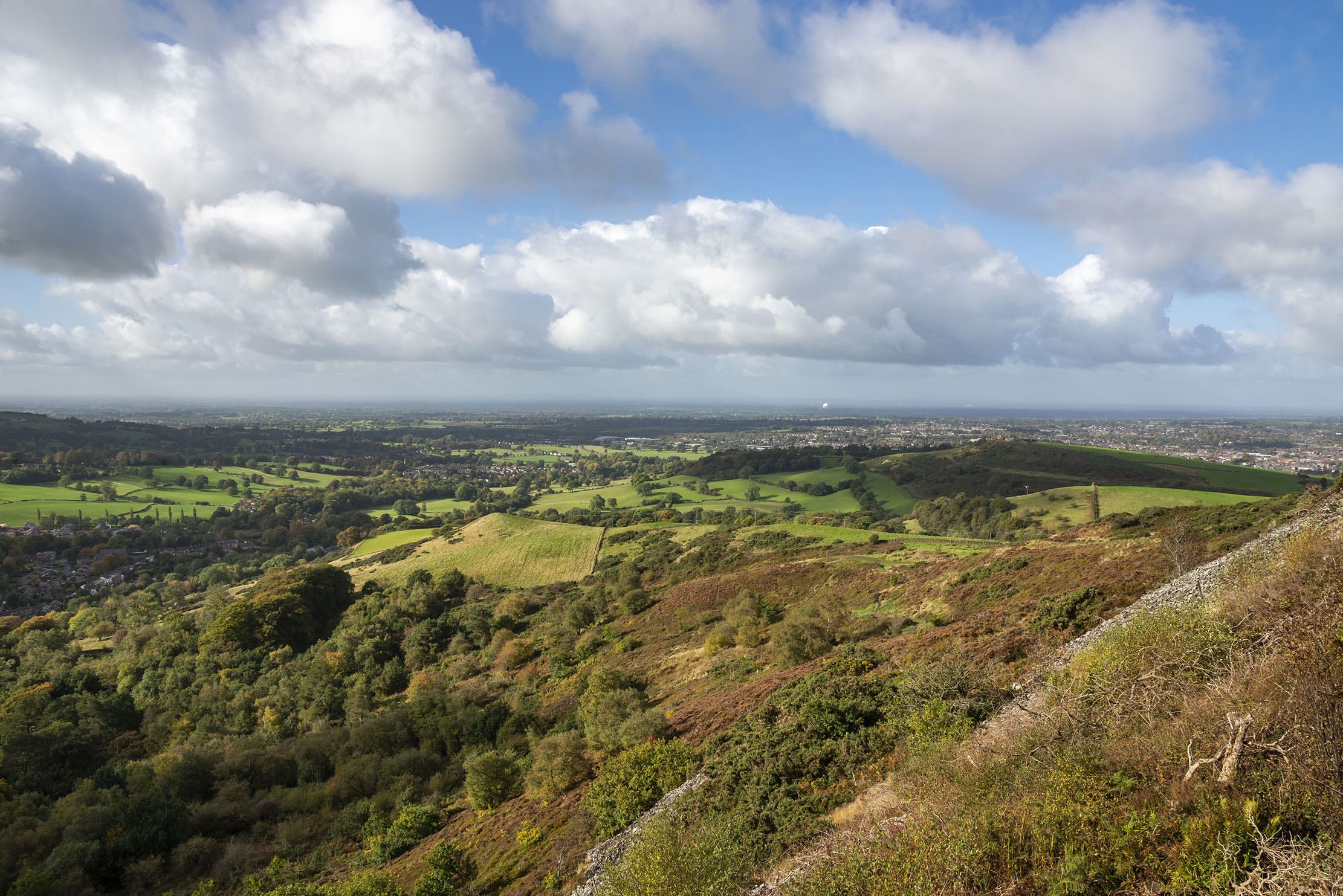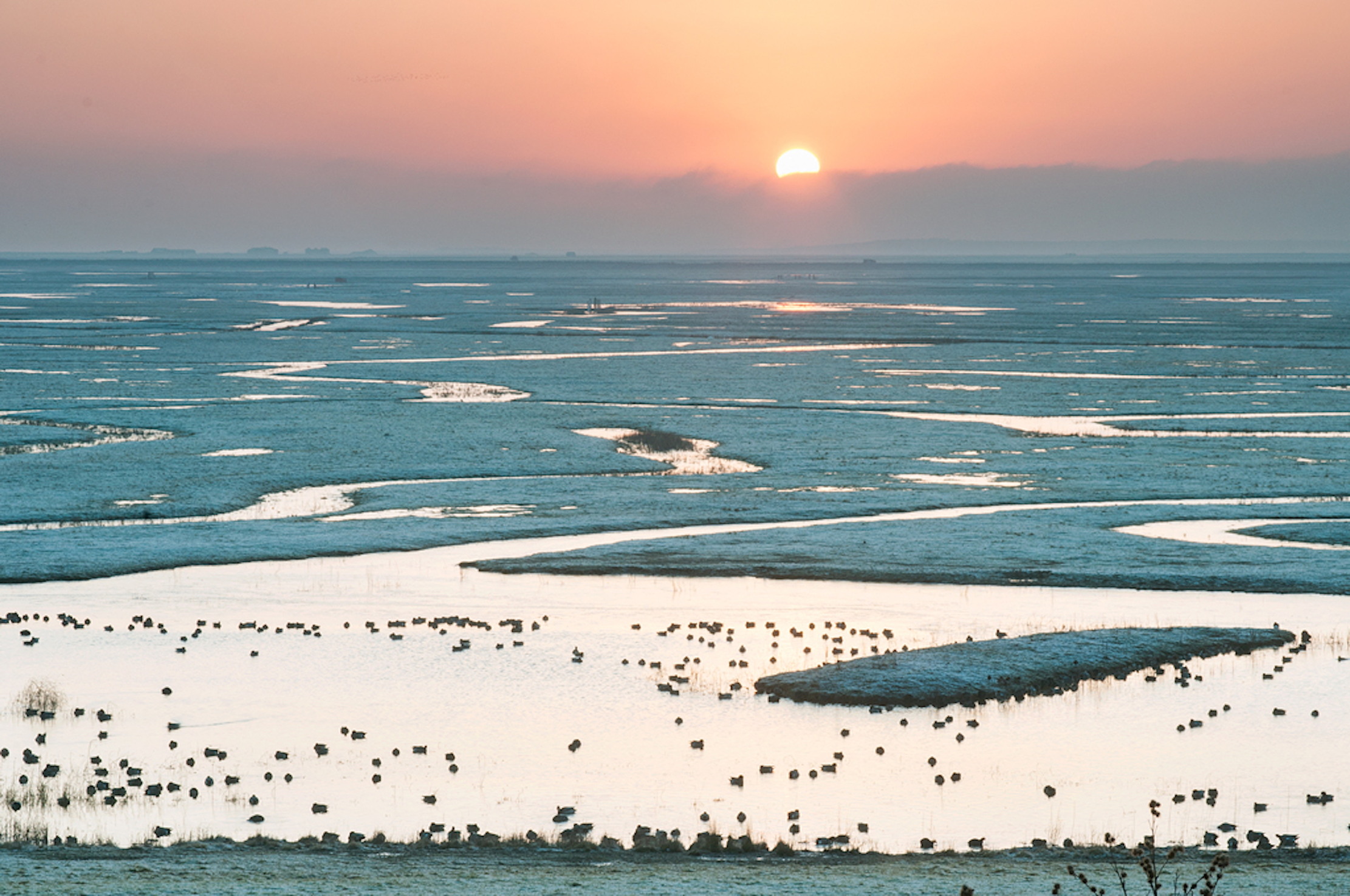The very nature of Middle Earth — how Tolkien's passion for the countryside inspired the Lord of the Rings
A Nature writer at heart, J. R. R. Tolkien drew on his love of the Malvern Hills and the surrounding countryside to paint his fantasy realm, says James Clarke


Stand by a stream and you might just hear the gentle chatter in its rippling rhythm. Look up at a tree canopy on an autumn day and see a cathedral of colour. Stand on a hilltop and look out over fields and rivers, villages and market towns. J. R. R. Tolkien’s imagination was populated by these encounters with the British landscape and he richly threaded both knowledge and memory through his work as a fantasy writer.
This year, his novel The Lord of the Rings: The Fellowship of the Ring celebrates the 70th anniversary of its original publication, in 1954. The story is of an unassuming, home-loving character named Frodo Baggins, who agrees to undertake a perilous quest that sees him depart a pastoral landscape and venture into increasingly doomladen terrain that is mountainous and brutal. In The Fellowship of the Ring, Nature’s beauty and harmony is evermore imperilled by a growing and all-encompassing threat.
One has only to see Tolkien’s watercolour of Hobbiton village, which he painted in 1937, to see how steeped his Middle-earth is in the shapes, colours and patterns of the countryside. The writer’s affection for Nature ran deep and, although he chose to write a fantasy, he detailed it with attention to the colours, forms and sounds of natural and farmed places and spaces.
In knitting together the real, the fantastic and the whimsical in a very British rural landscape, Tolkien was looking back in part to Kenneth Grahame’s The Wind in the Willows. Indeed, in Grahame’s novel, the chapter entitled The Piper at the Gates of Dawn draws on the realms of myth and folklore to conjure an otherworldly, riparian adventure for Rat and Mole. Across the breadth of his work, Tolkien emerges as a Nature writer.

If you find yourself taken by his reinvention of real places, let this encourage you to explore John Garth’s book The Worlds of J. R. R. Tolkien. In it, Mr Garth relates how, in the late 1930s, Tolkien wrote a letter to his publisher in which he proposed a new character who might suit as the focus of a follow-up to his hugely popular The Hobbit. The character the author sketched out would become Tom Bombadil, who features significantly in The Fellowship of Ring. For Tolkien, Bombadil would express and embody ‘the spirit of the (vanishing) Oxford and Berkshire countryside’.
He began writing The Fellowship of the Ring in early 1937 and his fantasy scenario is suffused with situations and dramatic tensions that evoke a sense of where the world found itself at that time. If there’s a lesson that Frodo and his fellow hobbits learn, it’s that you can’t isolate yourself from the troubles of the wider world.
It’s pertinent here, too, to note that the author had served on the front lines in France during the First World War and had seen there the extent to which Nature had been apocalyptically destroyed by conflict. This experience of a natural world lost to war didn’t only resonate with Tolkien: his contemporaries C. S. Lewis and John Masefield had also served. All three writers would go on to create notable fantasy novels, each one steeped in the joy found in Nature, as well as the human traditions and imaginative impulses arising from it.
Exquisite houses, the beauty of Nature, and how to get the most from your life, straight to your inbox.
Tolkien’s delight in the beauty and harmony of Nature is expressed in his creation of a pastoral idyll in the homely community of Hobbiton and The Shire at large. The early pages sees the author draw, in part, on his familiarity with the country of Warwickshire and Worcestershire. Indeed, the fertile Vale of Evesham had particular resonance as the home of his mother’s family.
Consider the sense of rustic homeliness being left behind by Frodo and his brave companions as they take their first steps away from Hobbiton: ‘As they began to climb its first slopes they looked back and saw the lamps in Hobbiton far off twinkling in the gentle valley of the Water… When the light of the last farm was far behind, peeping among the trees, Frodo turned and waved a hand in farewell.’
Places and characters that nurture are the forces of good in Tolkien’s novel and when Frodo and his fellow adventurers rest in the enchanting halls of the elves’ Rivendell, a sense of harmony abounds. Frodo, in repose, falls into a sensory experience of the natural world, as he imagines ‘an endless river of swelling gold and silver flowing over him’. As the protagonist’s adventure continues, however, he ventures into increasingly barren and hostile places, distinct for the absence of harmony.

Such places in the story are noted for being polluted; where rivers and pools run foul, these uninviting settings are indicative of rapacious forces of self-interest at work. Where danger is present, so, too, is a vivid absence of life: ‘The lands ahead were empty of all save birds and beasts, unfriendly places deserted by all the races of the world.’
Tolkien created heroic characters in full sympathy with their surroundings, yet it is his love for trees that finds sustained and fulsome expression. Relatively early in the novel, as the hobbits move beyond sight of the home they have left behind, Merry makes an observation about the unknown world of the Old Forest: ‘I thought all the trees were whispering to each other, passing news and plots along…’ This sense of the consciousness of trees returns later, when our heroes find shelter and renewal with Galadriel’s community of elves deep in the woods of Lothlórien.
This chapter sees Tolkien write with vivid affection for woodland: ‘As Frodo prepared to follow him, he laid his hand upon the tree beside the ladder: never before had he been so suddenly and so keenly aware of the feel and texture of a tree’s skin and of the life within it. He felt a delight in wood and the touch of it, neither as forester nor as carpenter; it was the delight of the living tree itself.’
The realm of fantasy aside, this was a man writing about the natural world around him. As scholar Dr Dimitra Fimi has highlighted, Tolkien was committed to reimagining real landscapes he knew deeply. Indeed, he wrote to W. H. Auden in 1956 that ‘I am historically minded. Middle-earth is not an imaginary world… it feels familiar, even if a little glorified by the enchantment of distance in time’.
The word ‘enchantment’ is key. Tolkien invests his writing with exactly this quality, taking places and seasons familiar to us, but making them anew within Middle-earth. Nature has a nurturing power and it’s in that power that much of the heroes’ strength in his landmark story is derived: being in sympathy with the earth, the water, the sky — and the histories of those natural places.

The Country Life Podcast
Listen to all the episodes of the Country Life Podcast.

A walk across the Cheshire Plain, the 200-million-year-old landscape where yesterday’s old industrial sites are today’s nature reserves
Fiona Reynolds heads out for a walk on the Cheshire Plain, where industry and farming are juxtaposed to startling effect.

The Isle of Skye and the world’s last manual turntable ferry
You may no longer see droves of cattle crossing the waters to the Isle of Skye, but the world’s last

Credit: Robert Canis
Elmley Nature Reserve – an island of nature in Kent that vibrates with birdsong
Spending two days in the wilderness on the Isle of Sheppey shows how much we've lost and how much we
Country Life is unlike any other magazine: the only glossy weekly on the newsstand and the only magazine that has been guest-edited by His Majesty The King not once, but twice. It is a celebration of modern rural life and all its diverse joys and pleasures — that was first published in Queen Victoria's Diamond Jubilee year. Our eclectic mixture of witty and informative content — from the most up-to-date property news and commentary and a coveted glimpse inside some of the UK's best houses and gardens, to gardening, the arts and interior design, written by experts in their field — still cannot be found in print or online, anywhere else.
